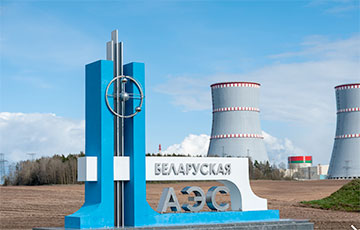BRELL Agreement Collapse
11- Maryna Mikhailava
- 18.02.2025, 9:46
- 9,030

Where should the “insightful” Belarusian authorities now put the energy from the Astravets NPP?
Belarusian propaganda convinces us that “the Baltic countries are becoming the backwaters of the European Union”. The budgets, they say, are drawn up according to the principle of belt-tightening, education, science, and the social sphere are financed on a residual basis. And small states are unable to carry out “elementary construction of transport and other infrastructure” without external subsidies.
Well, let us recall the fact that in Belarus, many roads, as well as social facilities and infrastructure in the regions, were also financed by the European Union. The Belarusian authorities, apart from re-paving the M1 highway, often “didn't get around to the periphery.”
Programs financed by the European Neighborhood and Partnership Instrument (ENPI) operated even despite the political disagreements between Minsk and Brussels. The country also received hundreds of millions of euros of technical assistance from the EU under the TACIS program, which benefited tourism, border infrastructure, education and the social sphere, energy, ecology, civil society — but also the republican and local authorities.
Now we have to talk about most of these projects in the past tense, and propaganda can only be proud of the nuclear power plant “megaproject” near Astravets.
Although in reality, the Belarusian NPP is idle almost more often than it works, Belarusians have not received any profit in the form of cheap electricity, and the country owes its creditor — the Russian Federation — $5.36 billion. And most importantly — the expectation that Lithuania would buy electricity with all its might has failed miserably.
Because Lithuania, as well as Latvia and Estonia, have been working for more than ten years to leave the post-Soviet energy system and not depend on either price or political blackmail from Russia in this area. According to experts, since 2007, about €1.6 billion has been invested in the project, with 75% of this amount coming from the European Union.
Since February 9, 2025, only BR: Belarus and Russia have remained in the BRELL energy ring.
Pro-Russian media and bloggers immediately began to assure that the Baltic states’ decision to leave it is an “energy adventure” that will cost them too much, threatens collapse, higher tariffs, and so on.
“The cost of electricity in the Baltic states has increased sharply after leaving the energy ring,” the state news agency BELTA scares its readers, predicting “stagnation of local industry and further impoverishment of the population.”
But is this true?
Firstly, all three countries have not imported electricity from Belarus and Russia for several years now — since the spring of 2022. And, as we can see, the factories have not stopped, the farmers have not gone bankrupt, the residents of apartment buildings have not frozen and are not sitting in the dark. And electricity, in particular, in Lithuania, has become more expensive... by 1-1.5 eurocents per kilowatt.In Latvia and Estonia, the maximum price increase for the year is expected to be up to 5%.
At the same time, thanks to the large-scale modernization of the energy system, according to the Latvenergo concern, already in 2024 Latvia provided 84.6% of its consumption through local production — the rest was purchased, in particular, in Finland. By 2030, it is planned to build a new power transmission line with Poland, Harmony Link.
Estonia, producing energy from wind, sun, water from biomass, covered its own needs last year by almost two-thirds — and in favorable weather conditions, zero or negative prices for electricity are increasingly valid on the exchange.
Lithuanian power plants provide from 70 to 75% of consumption. Moreover, in recent years, wind power plants have become increasingly efficient, generating more energy (in January 2025, according to Litgrid, electricity generation exceeded consumption, and average prices were falling) and reducing the country's dependence on imports.
“One of the methods of disinformation used by creators of videos on social media is the presentation of data that is several years out of date and the manipulation of facts. This is exactly how Russian propagandists and experts act when they report that Lithuania depends on electricity imports,” DELFI journalists summarize.
In reality, the Baltic countries have reduced their dependence on Russia, gained access to the European energy market and can choose cheaper, more reliable suppliers, etc. In addition, with the support of the EU, they are actively working on the development of “green” energy from renewable sources (RES).
Overall, in the European Union in 2024, solar energy overtook coal in demand, and gas demand has been declining for the fifth year in a row. The share of renewable energy sources has grown to a record 47%. And all this, alas and ah to Russian and Belarusian propagandists, leads to stabilization, and even a decrease in electricity prices — but not to their growth, mass protests of the population and “stagnation of local industry”. But where should the “insightful” Belarusian authorities now put the energy from the Astravets NPP (which, in the most favorable scenario, according to economists' calculations, would not pay for itself earlier than in 60 years), is a question with an asterisk.
Maryna Mikhailava, Solidarity











